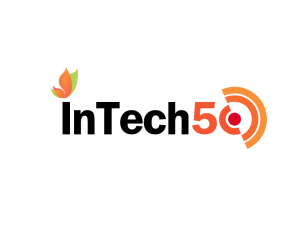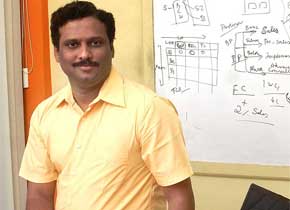Suresh Sambandam is the founder and CEO of OrangeScape, a company he set up along with colleague from Selectica, Mani Doraisamy. OrangeScape provides a Platform as a Service (PaaS) to build domain rich solutions, easily and fast. The company recently launched KiSSFLOW, the first workflow-as-a-service exclusively for Google Apps which seamlessly integrates with Google mail, docs and contacts. In the first of a two-part interview for pn.ispirt.in, Suresh talks to us about what inspired him to start OrangeScape, what factors he feels are important while starting up and when to recognize the deciding moment of whether to give up or continue.
So many people from smaller town today who are getting into the business today — for example you have people from Udupi and Agra who are foraying into the business. What about your story –you yourself hail from Cuddalore, a Tier 3 city so where did it start for you?
I believe that there are two sources of ideas. One is typically a B2C idea – and this comes from your common encounters. You yourself are consumer, and you encounter different problems as a user of a product. You get frustrated and you think about building new products or solutions to solve this frustration. This is where you can see a lot of younger people like college kids or graduates getting in to the game – if you carefully observe most of these products you’ll see more B2C products because the founders would have been users themselves who were faced with a particular problem and then thought about solving it. These don’t really require very deep domain knowledge. On the other hand you can take OrangeScape which is a B2B product that’s complex, as B2B products tend to be. This is because it takes someone who’s been in the area to understand the dynamics, gain deeper knowledge and figure out the gaps and challenges.
 Personally, prior to starting OrangeScape I was working for a company called Selectica which is a US based company that was one of the leaders in business rule engine space. At some point Selectica sold the Division I was part of, to Accenture, and we saw that as a great segue into the problem of how can we democratize application building process? That is a deep domain knowledge we got exposed due to our intensive work at Selectica in an adjacent area. So all this experience and knowledge helped the core team generate the idea and we decided this was something we should address and go after.
Personally, prior to starting OrangeScape I was working for a company called Selectica which is a US based company that was one of the leaders in business rule engine space. At some point Selectica sold the Division I was part of, to Accenture, and we saw that as a great segue into the problem of how can we democratize application building process? That is a deep domain knowledge we got exposed due to our intensive work at Selectica in an adjacent area. So all this experience and knowledge helped the core team generate the idea and we decided this was something we should address and go after.
So essentially there are two key factors that started the OrangeScape story. One was the experience that you gained from the previous companies you worked at, that helped you identify scope for improvement. The other was the core team, which is obviously fundamental to getting out on your own. What other factors would you say are important when you’re starting up?
India is slowly moving from services to a product building country. OrangeScape takes this thinking to one more level of sophistication which from product to creating sophisticated technology /platform. As I said before, to know this side of the tracks you need a lot of domain expertise. You need to know the problem and go after that. Second, of course the team is the most important thing. We had been blessed with a great team starting with my co-founder Mani that stayed on course for a longtime on this journey. Thirdly, I would say to some extent the phrase ‘ignorance is bliss’ plays a role here. Initially, we didn’t know how big the problem we were going after really was.
It was only after years did we realize that this is problem that an IBM or Oracle would go after, not a startup. But then if I knew all that when I started off, there are chances that we would have given up. Sometimes you don’t know everything about the problem, but then you take chances. And then you need to stay put on the path and committed. You have to be convinced about the problem and pursue the solution. So all these things need to come together for you to go in the direction that you want to.
When you do you decide that you’re making it or breaking it? What is that deciding factor? Where do you decided ‘enough is enough it’s time to get a day job’, or ‘hey, we’ve cracked it’?
The defining moment depends on your assessment of how big the problem you’re trying to solve. If the problem that you’re trying to solve is big enough for you to stay put on your course, then that’s a pretty strong deciding factor. I don’t think many people realize that it took SAP 15 years to go from product concept to launch and in the last ten years, they’ve been doing good business. Now cloud is disrupting their business, that is a different story. SAP was convinced that the problem they were dealing with was big enough and this inspired the vision for them to stay on course. So this is one aspect that determines whether you should hang up your boots or not. I would say that if you’re going after a small a problem then after some years you may decide to give up, but if it’s bigger then this may not happen. The other aspect is that if you’re meeting progress and you’re doing reasonably ok (not significantly, but you’re definitely progressing) then again this gives you the motivation to stay focused. If none of this is happening, then that may be an indicator that you may have to move on.




